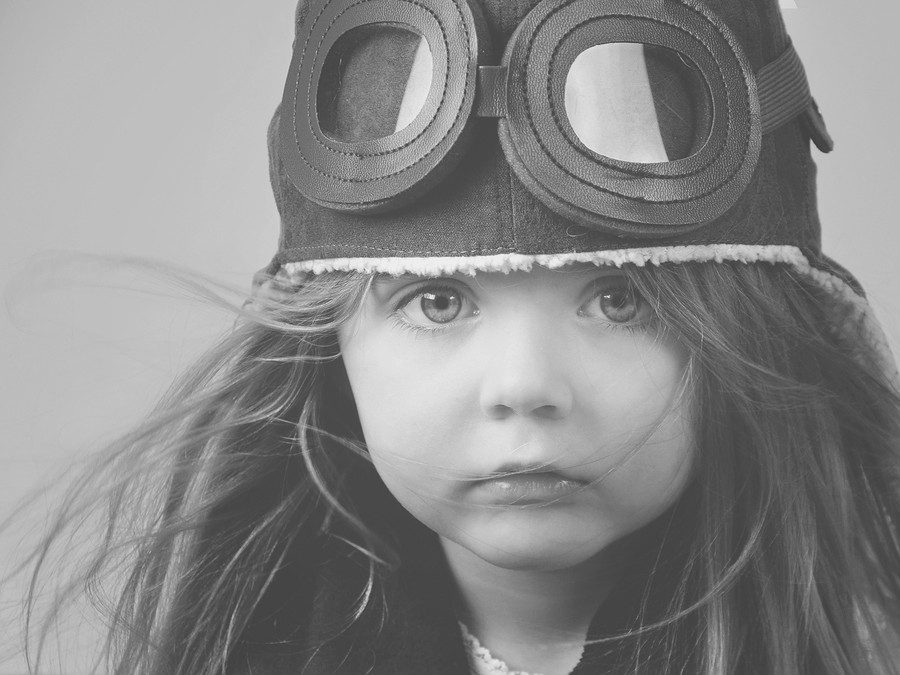Energetic Boundaries 101: Four Intuitive Steps to Guide Highly Sensitive Children.

{source}
“People have two needs. Attachment. Authenticity. When authenticity threatens attachment, attachment trumps authenticity.” ~ Gabor Mate
Most of us weren’t taught what energetic boundaries are, and even fewer of us were taught as children how to set them. An energetic boundary is like an invisible layer of skin around our soul and emotional body, one that helps us define where we begin and end in relation to another.
This self-awareness helps us monitor our energy level, recognize when our sacred self is being violated, and discern what kind of relational dynamics and physical boundaries best serve our well-being and happiness.
Brené Brown, pioneering social scientist and author of Daring Greatly, claims, “the most compassionate people that I’ve interviewed… happened to be the most boundaried. They happened to be the people who had very, very clear boundaries about what they were willing to do, what they were not willing to do, what they were willing to take on, and what they were not willing to take on.”
These four intuitive steps are particularly useful in helping highly sensitive children set energetic boundaries.
1. Acknowledge Energetic Imbalances
Cultivate self-awareness around your own upbringing in regard to boundaries, and what it means for you to be more loyal to your authenticity than to intergenerational and societal wounding. This will make it easier to role-model limit-setting around your own — or your partners’ — energetic imbalances in front of your children if you are co-parenting.
Yes, you read that right. The prevailing messages in most parenting books and articles are to discipline children as a united front, and not give them an opening to split and triangulate you. But what if they are acting up — and they often are — because they are tuning into your stuck energy and unresolved wounds? This two-against-one tactic is a sure way to break down a child’s healthy rebellious spirit that’s trying to ruffle our overly rigid feathers.
This is not any old two-against-one unfair fight. This battle often starts as a two-adults-against-one-two-year-old unfair fight, and continues on until their late adolescence. And this is sadly how we were coerced to accept the battered batons passed down to us.
We can support our children by giving ourselves and each other timeouts when we intuitively sense that our energy is not anchored in the present moment. This helps them identify and trust their own visceral perceptions and feelings, even if they don’t have the words and concepts yet to describe them. We also don’t need to fully understand why we are spinning away from our loving present-moment self frame-by-frame in order to take a timeout and regroup.
We just need to stop perpetuating what isn’t working, and feel in our bodies when that is happening. Conceptual awareness and language will follow.
Of course, our children are not perfectly attuned social gauges. They quickly cycle into their own imbalanced states, depending on their physical circumstances. You can test their intuitive reactions and develop greater trust in their intuition by sensing what they may not like about our state of mind, a particular person, or space.
2. Separate Merged Energy
The first set of authority figures beside you that your children will interact with are caregivers and teachers. There is a very good chance that these adults will not be as open to exploring their shadow parts as you are. We can’t protect our children from all the unaware and insensitive people in society, but we can ease them into potentially harmful contexts as gently and with as many skills as possible.
If you have any control in avoiding stressed-out environments when your children are young, make it a priority. Don’t fret too much if you can’t keep them in a glass case, because they’ll end up rebelling against your overprotective sheltering. The imbalances that seep through will provide the traction and grind they need to fully practice and develop their social skills.
Social groups start to form in grade school, and will mirror what’s favored and rewarded by dominant society and teachers. Sensitive and attuned children will start to make inferences based on where they fit on the social ladder without being fully conscious of it, often placing themselves into a second-class category. They will greatly benefit from self-reflection and validation of their feelings.
If your perceptions and support resonates with their inner experience, they will be able to unmerge themselves — their voice, mind, attitude, and outlook on life — and feel reassured and empowered.
3. Utilize Energetic Barometers
When children feel validated that their feelings are natural responses to certain situations, these feelings just run their course and lose their charge. However, certain situations, classes, teachers, and friends may persistently trigger them, just like certain things may persistently trigger us. Your child may feel oppressed, as if perpetually carrying a weight around, and trapped by their external circumstances.
You may also feel powerless, because the issues are not serious enough for you to step in. For instance, your child is not being bullied, but is bothered that the popular crowd is being rewarded with higher status for acting superior and exclusive.
This may become more of an issue during preadolescence and adolescence when hormones and physical changes exacerbate everything that they are already going through. They may withdraw, give you the silent treatment, act oppositional, and seem like they are on an emotional roller coaster, because of everything and everyone, including you.
Keeping the lines of communication open is ideal, but most likely it will feel like everything you have worked on this far just went down some mysterious drain. You offer an opening. You get zilch back. Actively give your child permission to go through this reactive, rebellious phase, and encourage them to talk back in their head or journal about everything, even you.
Their observations may be totally off, exaggerated, stereotypical, inappropriate, and black and white, but they are nevertheless important to express. It helps them develop a relationship with themselves, and gives them an opportunity to explore and become familiar with their inner world.
Giving them space and permission for self-expression energetically fills them up, reaffirms their authentic self, and prepares them from the inside out for more finessed conflict resolution skills and communication.
4. Set Energetic Boundaries
Preadolescents and adolescents are actively exploring their identity, and are able to claim what they think, feel, and need with I-statements. When they are able to hold sacred space for their inner experience and feelings without judgment, they become more immune to external judgments and perceived threats.
The next step for them is discovering that not every thought and every feeling is aligned with their whole and best self. Just like it’s not a good idea to believe everything we think, it’s not a good idea to trust everything we feel. Thoughts, feelings, dreams, and life goals, as we saw above, can get distorted and misaligned as a result of the many pressures and social imbalances around us.
What are some signs and guidelines that could help them distinguish between aligned and misaligned thoughts and feelings? It helps if we have a visceral and grounded sense of our wholeness to understand how it’s different from our wounded self. Our wounded voice is, more often than not, speaking on behalf of our triggered self, and releasing charged, unresolved feelings, perceptions, and thoughts that are habitually repressed.
The tendency is to shut down the triggered feelings, and avoid the trigger. However, they are there to help us become more aware of hidden treasures. Curious exploration and openness around the triggered feelings most effectively reveals the healing that needs to happen to reintegrate split parts into the whole. These triggers are often early signs of your child’s purpose and calling, and often grow into a passion to address similar issues in adulthood.
***
Loraine Van Tuyl, PhD, CHT, holistic psychologist, depth hypnosis practitioner, and shamanic healer from the Sacred Healing Well, is devoted to helping wisdom-keepers, healers, and seekers, including her tween girl and teen boy, dive deep into their self-healing potential and carve out their sacred dream paths in service of their dynamic whole self and the greater good. Her memoir-in-progress, Amazon Wisdom Keeper, is an eye-opening account of her spontaneous spiritual emergence and shamanistic initiation triggered by indoctrinating double-binds in the mental health field. What gives her story an added twist is her ability to anchor into her rich cultural background and mystical upbringing near the edge of the Amazon rainforest when standing her ground, challenging her field, and placing all bets on her spiritual integrity, intuitive resilience, and clarity: each one severely tested after escaping the chaotic aftermath of a military coup in her native Suriname, and losing almost everything that she knew and loved at the age of 13.
***
{Join us on Facebook, Twitter, Instagram & Pinterest}

